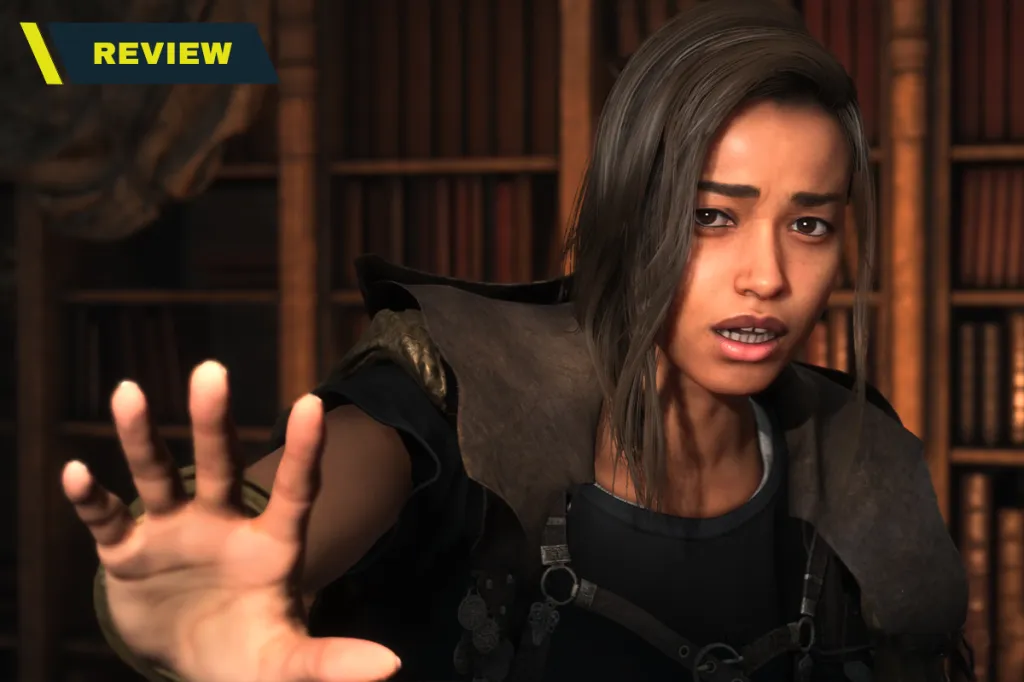
Square Enix’s fantasies take different forms, but none are quite like Forspoken. This action RPG’s fantasy isn’t final and blends its fantastical elements with a splash of modernity thanks to its unique isekai premise. But rather than being a refreshing take on the types of games Square Enix is known for, Forspoken is a deeply flawed experience that jumps from gripping highs to embarrassing lows, while all too often occupying the mundanity between those extremes.
Forspoken’s highest leaps are when it is literally leaping high since its protagonist, Frey, can scurry around like a magical mix of Spider-Man and any one of the protagonists from Infamous. Quickly sprinting across vast distances is a passable starting point, but the whole traversal system grows quickly and, much to its benefit, gets more complex. Chaining grapples and knowing when to jump is an active experience since there are ways to quickly regain stamina and keep the flow going.
It’s not like other games where just pressing forward is good enough, and having to time different moves is an engaging and empowering system that requires constant attention. The exaggerated effects and animations augment its parkour by providing visual flourishes that match the energy of Frey’s supernatural skills. The game hamstrings itself in a few ways by hiding crucial moves (like its glide) in far corners of the map and making vertical and uneven structures unusually difficult to scale at times, but it’s mostly a blast to run around like an enchanted superhero.

Nimble movement also helps during combat since it allows Frey to be more mobile on the battlefield. And she similarly has plenty of options when trying to dispose of the corrupted beasts gnawing at her cloak with her four magic types. Spells in the same class unfortunately don’t have a cohesive general principle binding them together outside of their element, however, they still give Frey all sorts of ways to bind, blast, and bash her enemies.
Combat thrives when players have to quickly pick what spell or spell type would be best for the moment, while also wrestling with cooldowns and paying attention to incoming attacks. Menus are snappy, too, so it’s not a drag to switch between moves, but they slow down the action just enough to allow for some strategic thinking. Its semi-automated parry system that’s more trouble than it’s worth and affinity for off-screen attacks are two sore spots, but its breakneck pacing and amount of options carry it quite far.
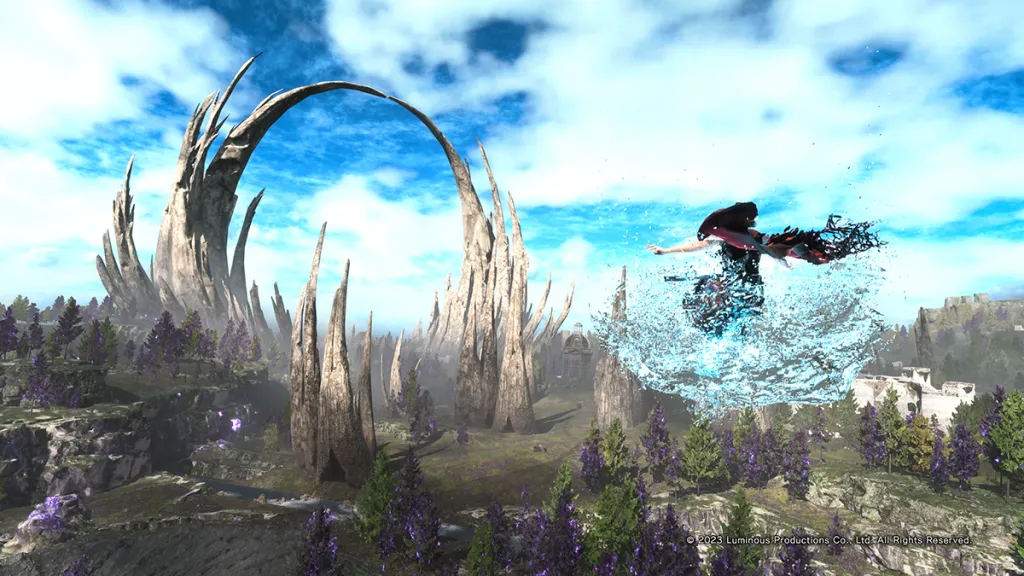
All of this can still get repetitive since Forspoken is such a weird, dated, and poorly designed game a lot of the time. Its open world is as huge as its problems since it’s loaded with the same menial side tasks that have next to no narrative value and are just there to fill space. Forspoken has its set of repeatable activities that it peppers around liberally with no thought. It’s such a tedious checklist — and an exhaustively big one at that — that doesn’t push players to explore or find places naturally. Checking these off can be cathartic and sometimes enjoyable given its mechanical strengths, but these mindless chores occupy too much of the experience.
Checklist-type games aren’t new anymore, but some, like Horizon Forbidden West, can rise above that by providing great context to the to-do list. Forspoken is not one of those games since Athia has very few traditional story-driven side missions to speak of. There are a couple torturously dull ones in the lone main town, but the majority of its optional content manifests in the dry activities littered around the map.
It justifies this narratively by explaining that humans can’t survive outside of the city walls, but it’s a massive conceptual flaw that prematurely stymies its potential to flesh out its world. Red Dead Redemption 2 would not be as lively without its random encounters and Breath of the Wild would feel desolate if it didn’t have small yet lively villages peppered throughout its plains. Since there is very little context to most of Athia’s uninhabited fields and mountains, it ends up being a hollow and generic setting.
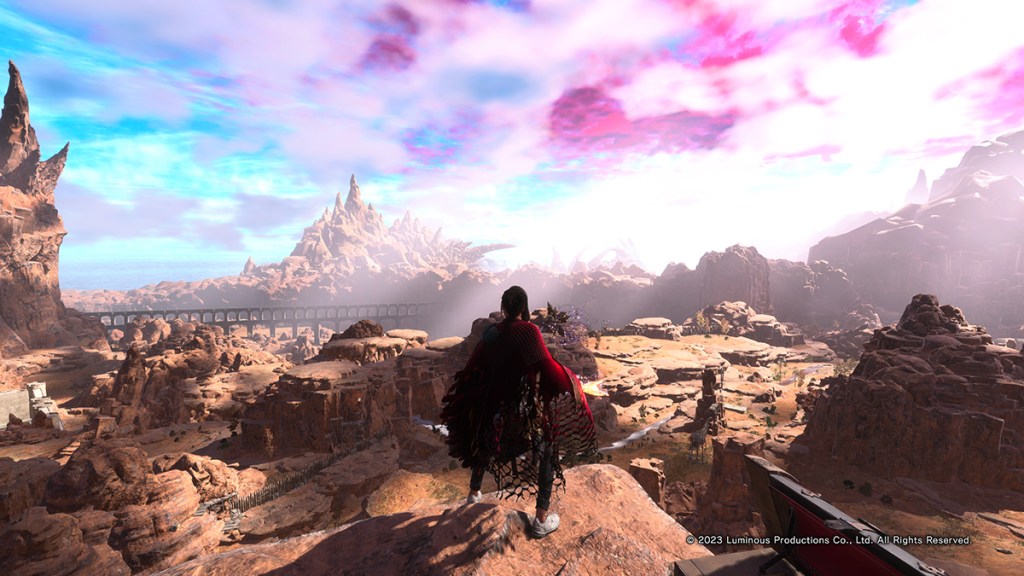
The lifeless art style also reinforces this feeling, as Forspoken is a textbook example of a game with proficient technical graphics that fail artistically. Its visuals are flat and bathed in overly harsh lighting that washes out its environments and doesn’t evoke any mood or atmosphere. There are occasionally pretty vistas, but they’re all sterile and seem like they were mostly designed by an algorithm.
The map layout itself is particularly inorganic since it is full of faux pas that the genre typically avoids. Some sections may seem close to each other on the map screen but are separated by unscalable terrain, leading to frustrating detours. A few parts are literally unclimbable, resulting in an obtrusive pop-up asking players if they want to simply teleport to the top, while others sections require overly specific routes, all of which go against the freedom that is supposedly at its core. Its numerous pitfalls coalesce and consistently show how gratuitous, banal, and inconveniently constructed Forspoken‘s world is.
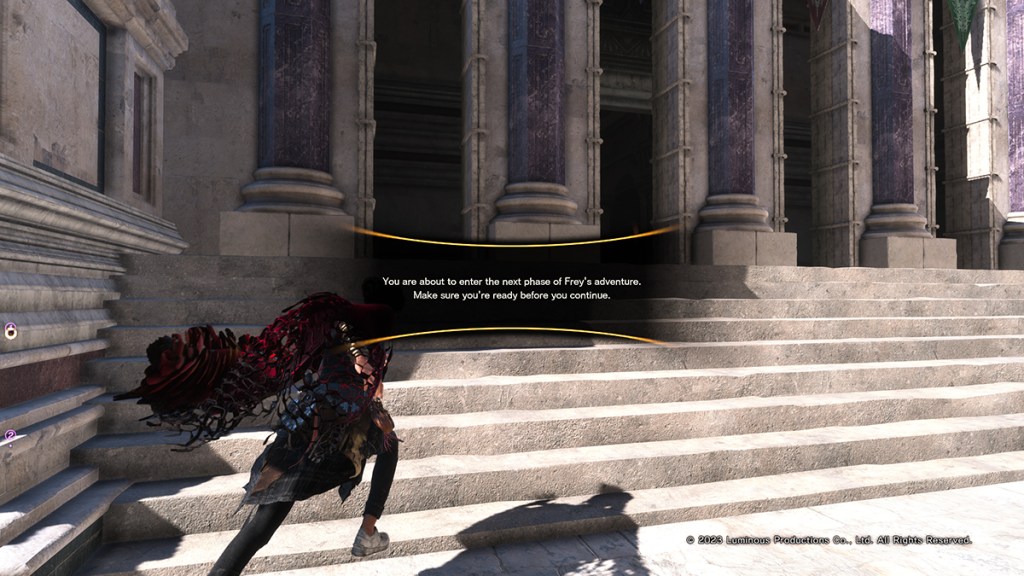
The whole game riddled with many annoyances like these that add up and drag down the entire experience. For example, players can have just three spell challenges open at a time and can only swap them out at certain safe places, which is too limiting and drags out the process. Adding perks to Frey’s gear is conceptually great, yet it forces players to craft the same upgrades again if they swap to a new outfit, an oversight that makes it difficult to want to try out new armor sets. Foes can also be stunned and executed for a critical hit, but it’s unclear exactly how that whole system works.
However, its ridiculous tutorialization and heavy-handed design are the worst offenders. Forspoken loves to keep players from the action by stopping everything, zooming in on something important, having the characters speak about it, and then inserting a text box to repeat the same painfully obvious tip that was literally just mentioned. It also has this befuddling knack to warn players of “the next phase of Frey’s adventure” through a pop-up before nearly every mission when the stakes do not warrant such a dire warning. The lack of changes after those missions also makes those ominous messages even more confusing.
Despite the initial boot and fast travel being ridiculously fast, constant loads add in even more interruptions. Black loading screens usually bookend or interrupt scenes no matter how major or minor and, when mixed in with its misguided adoration for text pop-ups, creates an experience that’s determined to regularly rip control away from the player.
It’s far too common for a scene to go from a black loading screen to a few short dialogue lines to some very brief gameplay before looping the process and severely diminishing any immersion. Some of these parts even end with Frey sitting motionless for several seconds before the player regains control. Forspoken is anything but seamless as it constantly starts and stops, which are aspects that go against its energetic traversal and the PlayStation 5’s SSD that was designed to mitigate these last-gen irritations.
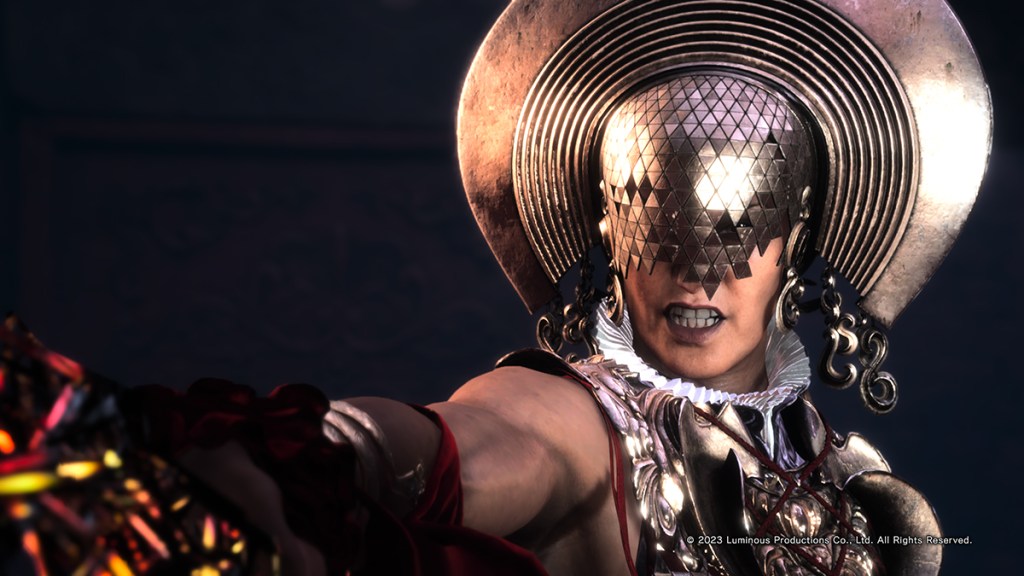
However, no drive is fast enough to mitigate its irritating narrative. It all starts with its hacky writing that is immediately noticeable from the stilted intro, and it never picks up from there. Nothing makes this more clear than the conversations Frey has with her metallic partner Cuff since their insufferable banter sounds like the most unfunny people on the planet tried to write a Marvel movie. Quips can work, as they often do in said Marvel films, but they’re just not funny, clever, or endearing here; it’s just that simple. It’s constant and means turning down the wisecracks — an option that is a telling admission from Luminous Productions — is essential.
The plot and worldbuilding are almost as bad, but for other reasons. The story hurriedly scrambles to its big story beats with little downtime or buildup, leading to a rushed campaign that is surprisingly brief and lacks proper setups, payoffs, and tension. The last act is particularly a disaster since it finally slows down by dropping an indigestible amount of lore on the player in a futile attempt to explain itself and its unearned final twist.
Its lore holds glimmers of potential, yet it just isn’t extensive enough to support a lively and compelling fictional setting. Its past is mostly explained in dry text logs and, based on how much the critical path glosses over it, isn’t all that nuanced to begin with. The world in its present state is also hardly focused on since almost all of its drama is myopically centered on its anemic main story and fails to build itself up beyond that narrow scope. The superficial nature of Forspoken’s world is another consequence of having poor side missions since great optional quests can flesh out a game’s universe.
Project Athia was Forspoken‘s working title, but it still plays like it deserves that unfinished name since it’s more of a playable concept than a fully featured action RPG. Its visuals have zero personality, the writing is annoying, its vapid open world is stunningly bloated, the side missions are shallow, its story is poorly told, and the lore just isn’t that deep; all symptoms of an undercooked game. Forspoken has a long list of problems that are only temporarily alleviated by its spellbinding combat full of different magical attacks and flashy superpowered parkour. Frey may “do magic” and “kill jacked-up beasts,” but she can’t overcome the mediocrity that surrounds her and spills out of her mouth at nearly every turn.
SCORE: 5/10
As ComingSoon’s review policy explains, a score of 5 equates to “Mediocre.” The positives and negatives wind up negating each other, making it a wash.
Disclosure: The publisher provided a PlayStation 5 copy for our Forspoken review. Reviewed on version 1.000.001.
The post Forspoken Review: Frail Fantasy appeared first on ComingSoon.net - Movie Trailers, TV & Streaming News, and More.
from ComingSoon.net – Movie Trailers, TV & Streaming News, and More https://ift.tt/vd0xmpX



.jpeg)
